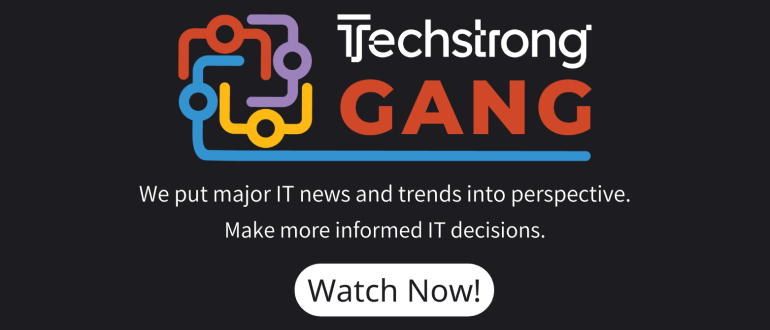How to Move From a Monolithic Architecture to a Cloud-Native Approach
For companies, cloud-native technology is the next logical step up from a cloud-first strategy, following in the footsteps of DevOps, which significantly increases agility in application development. However, even if cloud-native is your end goal, should you aim to convert every application and system within your infrastructure?
While cloud-native does allow you to scale applications more easily, improve overall performance and relieve yourself of the burden of machine management, it is ultimately a question of cost-effectiveness — modernizing applications and their platforms is a lot of work.
But if you are heading down this path, what are the steps you must take to convert an existing application to cloud-native?
Three Main Principles of Cloud-Native Conversion
1. Decoupling Your Application Components
Migration to a cloud-native architecture requires you to identify the different software building blocks that make up your application. This allows you to isolate each component within separate containers (one container equals one microservice), which can then run autonomously and independently. By dividing your application into microservices, you can increase or reduce the resources allocated to each service, avoiding the traditional bottlenecks that eventually appear in a monolithic architecture.
These small, autonomous software building blocks are also interoperable, which makes them easier to reuse and/or share, increases agility in application development and makes your application easier to scale.
However, decoupling involves a key challenge — making sure it doesn’t cause a shift from microservice to nanoservice, an anti-model where services expose functions instead of acting as ‘real services’ and where the management of the service (communications, maintenance, etc.) exceeds its usefulness. In other words, beware of the ‘spaghetti code’!
2. Moving to Stateless Architecture
Even after your application is divided into independent components, more work is required to make it stateless. Through decoupling, you can make each component work in a container; however, there would be no added value in allocating a virtual machine (VM) to each one. The importance of containers lies in their elasticity, i.e. their ability to be easily started, multiplied or stopped — in other words, in supporting these abilities for each service.
It is precisely this feature — and its use by Kubernetes (the most popular container management technology) — that allows you to easily scale your architecture (either vertically, by allocating more resources to a container as and when required, or horizontally, by multiplying containers), making it highly available. If a node is inaccessible, the container it carries is instantly recreated elsewhere. It is also possible to set up a rolling update for continuous updates without service interruptions (the containers are then updated successively). This mechanism also allows for an easy rollback in the event of a version upgrade of a microservice that ends up causing incompatibility or side effects in other microservices in the architecture.
3. API-Oriented Communication Between Components
Supporting stateless mode and switching from one to multiple containers require several elements. Firstly, you need to ensure that the autonomous components of your architecture communicate with each other synchronously, asynchronously or via event broadcasting. These three modes of communication must complement each other to avoid a domino effect in the event of one of the services failing. In other words, a microservice must be able to run its processing operations without depending on the availability of another service. Next, your processing needs to be parallel. And finally, the ephemerality of containers — meaning that the local storage, i.e., the container’s memory, should be used as little as possible.
These requirements involve significant API-zation for your microservices. In fact, beyond a certain degree of complexity, you need to use APIs to get your microservices to communicate and/or make them interact with third-party services, to facilitate the development of your application. These APIs must be documented and updated regularly.
Is the Cloud-Native Approach Beneficial in All Use Cases?
The promise of cloud-native technology is enticing. But be careful — the move to this type of software architecture radically changes the way applications are developed, from how the technological building blocks are assembled to how they interface via APIs. Additionally, migration from a monolithic architecture is not a simple transposition of code. It requires adapting or even rethinking entire areas, to make the core of the application scalable.
Before considering this type of migration, we need to ask the right questions. There is no benefit to migrating the old software that you use to create monthly pay slips — unless you suddenly grow from 0 to 100 employees, with a simultaneous increase in the complexity of calculating the pay slips. The investment will be more profitable if the application needs to evolve regularly and its workload varies over time. In many cases, particularly for organizations with a large legacy software estate, teams may need to proceed in stages, focusing on functional areas where the benefits of cloud-native technology will be the greatest.
Billing is one reservation that non-technical teams often have when switching from monolithic to cloud-native architecture. Monolithic applications have stable, predictable billing. Switching to a more agile, flexible approach results in variable costs, but usually for the better, with teams seeing substantial savings because of superior utilization, especially if disciplines like FinOps are embraced. Furthermore, the overall increase in performance and scalability makes it worth considering seriously — not to mention that it paves the way for even more powerful and flexible tools that use a cloud-native approach by default.
Thus, by taking a careful, considered approach to cloud-native technology, organizations can reap significant rewards, futureproofing themselves and paving the way for future growth.
KubeCon + CloudNativeCon EU 2025 is taking place in London from April 1-4. Register now.



